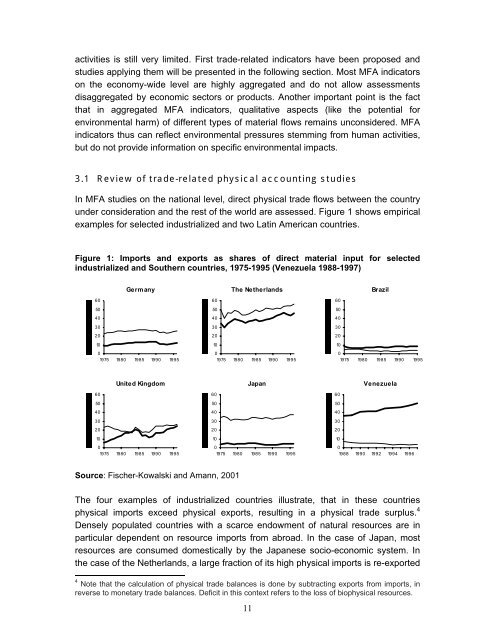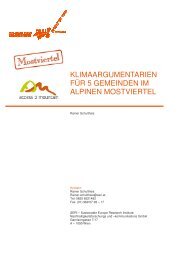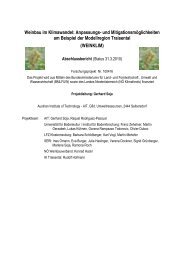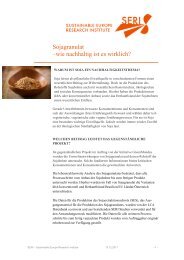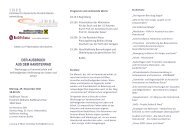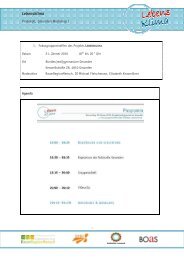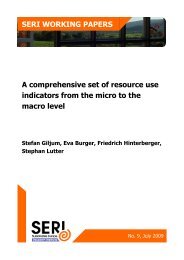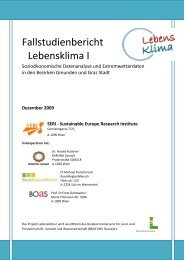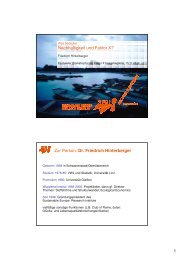Download PDF - Sustainable Europe Research Institute
Download PDF - Sustainable Europe Research Institute
Download PDF - Sustainable Europe Research Institute
Create successful ePaper yourself
Turn your PDF publications into a flip-book with our unique Google optimized e-Paper software.
activities is still very limited. First trade-related indicators have been proposed and<br />
studies applying them will be presented in the following section. Most MFA indicators<br />
on the economy-wide level are highly aggregated and do not allow assessments<br />
disaggregated by economic sectors or products. Another important point is the fact<br />
that in aggregated MFA indicators, qualitative aspects (like the potential for<br />
environmental harm) of different types of material flows remains unconsidered. MFA<br />
indicators thus can reflect environmental pressures stemming from human activities,<br />
but do not provide information on specific environmental impacts.<br />
3.1 Review of trade-related physical accounting studies<br />
In MFA studies on the national level, direct physical trade flows between the country<br />
under consideration and the rest of the world are assessed. Figure 1 shows empirical<br />
examples for selected industrialized and two Latin American countries.<br />
Figure 1: Imports and exports as shares of direct material input for selected<br />
industrialized and Southern countries, 1975-1995 (Venezuela 1988-1997)<br />
60<br />
50<br />
40<br />
30<br />
20<br />
Germany<br />
10<br />
0<br />
1975 1980 1985 1990 1995<br />
60<br />
50<br />
40<br />
30<br />
20<br />
10<br />
United Kingdom<br />
0<br />
1975 1980 1985 1990 1995<br />
Source: Fischer-Kowalski and Amann, 2001<br />
60<br />
50<br />
40<br />
30<br />
20<br />
10<br />
The Netherlands<br />
0<br />
19 75 19 8 0 19 8 5 19 9 0 19 9 5<br />
60<br />
50<br />
40<br />
30<br />
20<br />
10<br />
The four examples of industrialized countries illustrate, that in these countries<br />
physical imports exceed physical exports, resulting in a physical trade surplus. 4<br />
Densely populated countries with a scarce endowment of natural resources are in<br />
particular dependent on resource imports from abroad. In the case of Japan, most<br />
resources are consumed domestically by the Japanese socio-economic system. In<br />
the case of the Netherlands, a large fraction of its high physical imports is re-exported<br />
4 Note that the calculation of physical trade balances is done by subtracting exports from imports, in<br />
reverse to monetary trade balances. Deficit in this context refers to the loss of biophysical resources.<br />
11<br />
Japan<br />
0<br />
1975 1980 1985 1990 1995<br />
60<br />
50<br />
40<br />
30<br />
20<br />
10<br />
Brazil<br />
0<br />
1975 1980 1985 1990 1995<br />
60<br />
50<br />
40<br />
30<br />
20<br />
10<br />
Venezuela<br />
0<br />
1988 1990 1992 1994 1996


